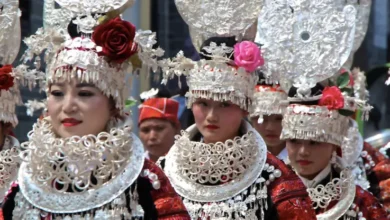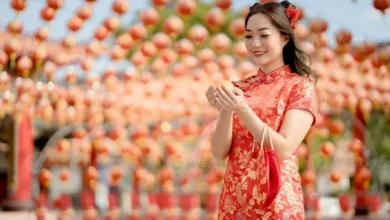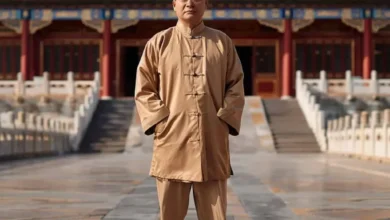The Rich History Behind the Qipao Dress
The Qipao (also known as Cheongsam in Cantonese) is one of the most iconic pieces of traditional Chinese clothing. Its origins can be traced back to the Qing Dynasty, where it was first worn by the ruling Manchu people.
Over centuries, the Qipao evolved, blending different regional styles, and becoming a symbol of Chinese culture. The Qipao is not just a piece of clothing; it is an embodiment of Chinese history, elegance, and the beauty of tradition.
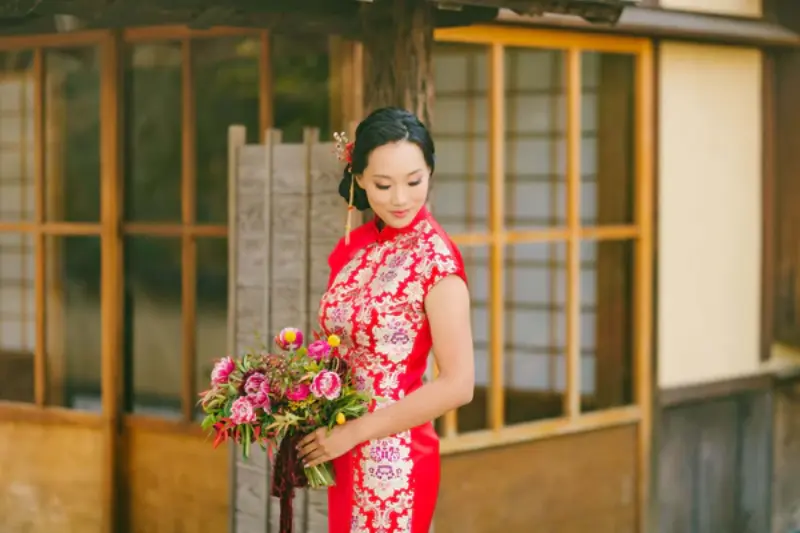
The Evolution of the Qipao: From the Qing Dynasty to Modern Times
The Qipao‘s evolution began during the Qing Dynasty (1644–1912) when it was initially a loose, full-length garment. This design was influenced by the Manchu clothing style, which was designed for both comfort and modesty. The Qipao was traditionally worn by women in the Qing Imperial Court and later adopted by people across China.
In the early 20th century, as China experienced dramatic social and political changes, the Qipao began to evolve. The 1920s marked a turning point, as the Qipao became more form-fitting and tailored, mirroring the modernizing world. The incorporation of high slits, tight waistlines, and delicate fabrics helped to redefine the Qipao, turning it into an elegant symbol of femininity and grace.
See also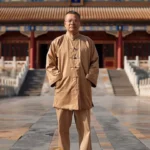 Traditional Chinese Clothing: The Zhongshan Suit
Traditional Chinese Clothing: The Zhongshan SuitThe Significance of the Qipao in Chinese Culture
The Qipao is more than just a beautiful dress; it carries deep cultural significance. The dress reflects the rich, centuries-old history of China and represents the feminine ideal of modesty, elegance, and grace. Worn during important events like weddings, festivals, and other celebrations, the Qipao is a symbol of good fortune and prosperity.
In many parts of China, the Qipao is also considered an emblem of Chinese identity, especially in areas like Hong Kong and Shanghai. For these regions, the Qipao holds cultural value, representing the blend of traditional and modern Chinese life.
How to Identify the Key Features of a Qipao Dress
The Qipao is known for its distinctive features that set it apart from other traditional attire. These include:
- High Mandarin Collar: One of the defining characteristics of the Qipao, the high mandarin collar adds to its elegant and sophisticated look.
- Form-Fitting Design: The Qipao is renowned for its body-hugging silhouette. It emphasizes the natural curves of the wearer, providing a timeless, flattering figure.
- Side Slits: The high slits along the sides of the dress add a modern, bold touch while still maintaining modesty. These slits allow for freedom of movement, making the dress both stylish and functional.
- Rich Fabrics and Embroidery: Traditional Qipao dresses are often made from luxurious silk or satin and are embroidered with intricate designs of dragons, phoenixes, or flowers. The embroidery adds to the dress’s opulence and beauty.
The Traditional Elements of the Qipao: Fabric, Color, and Symbols
Fabric: The choice of fabric is critical when it comes to the Qipao. Silk and satin are the traditional fabrics of choice due to their smooth texture and luxurious sheen. They also represent wealth and status, particularly when adorned with hand-stitched embroidery.
See also The Timeless Elegance of the Dhoti: India’s Traditional Attire
The Timeless Elegance of the Dhoti: India’s Traditional AttireColor: The color of a Qipao is also significant. Red is the most popular color, symbolizing good luck and prosperity, especially in wedding ceremonies. Other colors, such as gold and purple, represent wealth and nobility. The choice of color can convey different messages depending on the occasion and the personal preferences of the wearer.
Symbols: The symbols embroidered on the Qipao have symbolic meanings. For example, dragons and phoenixes represent power and feminine grace, respectively. Flowers, such as peonies, are symbols of wealth and good fortune. These symbols not only enhance the beauty of the dress but also carry important cultural messages.
Wearing a Qipao: How to Style the Iconic Dress
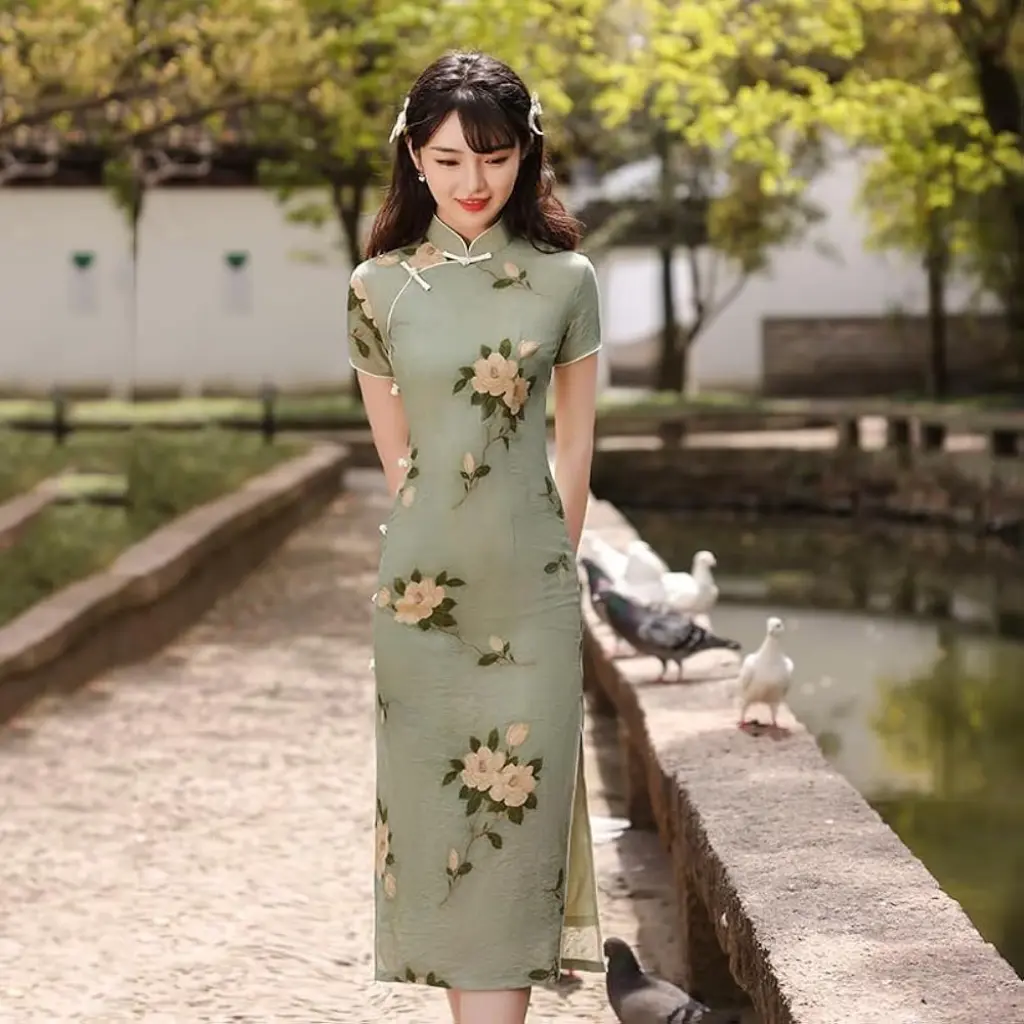
The beauty of the Qipao lies in its versatility. While traditionally worn with heels and minimal jewelry for formal occasions, it can also be adapted for modern wear. Here are a few ways to style a Qipao for different events:
- For Weddings: Traditional Qipao styles for weddings often feature red colors with intricate golden embroidery. A Qipao wedding dress can be paired with a delicate veil or headpiece to complete the bridal look.
- For Evening Events: A Qipao worn to an evening event is often made from dark, elegant fabrics, such as black silk or emerald green satin. The dress may be paired with elegant heels and statement earrings.
- For Casual Wear: A modern, casual Qipao could be made from lighter fabrics and paired with flats or wedges. You can accessorize with simple jewelry for a more understated look.
The Qipao’s Role in Modern Chinese Fashion
While the Qipao remains a traditional garment, its influence has extended into modern fashion. Contemporary fashion designers have reinvented the Qipao, adapting it for various uses. Some designers experiment with the dress’s cut, fabric, and embroidery, making it suitable for red carpet events, high fashion, and international fashion shows.
In recent years, global celebrities have embraced the Qipao for its elegant, timeless appeal. It has been worn by international stars at prestigious events like the Met Gala and Cannes Film Festival, showcasing how the Qipao can transcend cultures and fashion trends.
Why the Qipao is Still Relevant Today
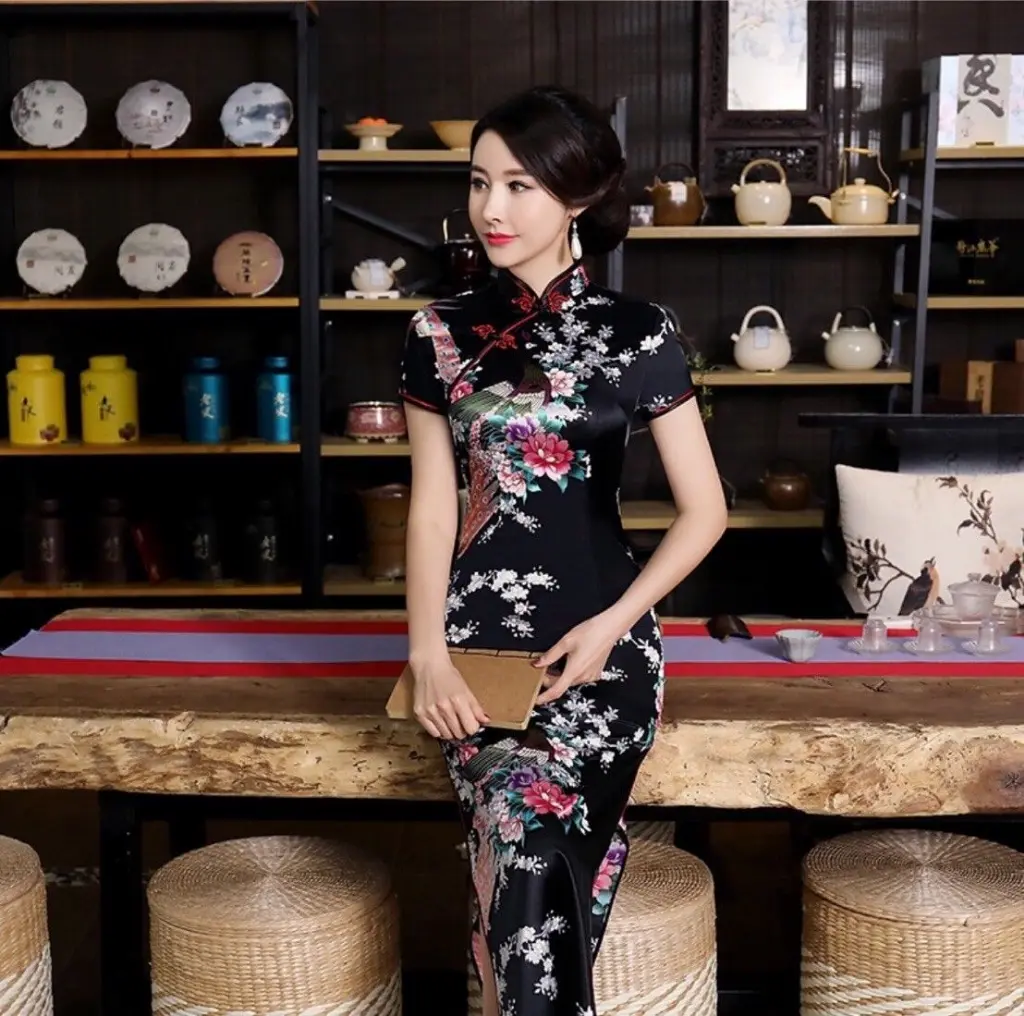
Even in today’s fast-paced, modern world, the Qipao remains relevant. It has survived through centuries of change and continues to symbolize Chinese elegance and cultural pride. It is a perfect blend of tradition and innovation, making it a timeless choice for those who appreciate the beauty of cultural heritage.
The Qipao serves as a link between generations, representing the continuity of Chinese traditions while embracing modern styles. It speaks to the ongoing evolution of Chinese culture, showcasing the ability to adapt without losing its sense of identity.
The Qipao Dress in Popular Culture
The Qipao has appeared in many films, books, and television series, often portrayed as a symbol of feminine beauty and elegance. From classic Chinese cinema to international blockbusters like The World of Suzie Wong and In the Mood for Love, the Qipao has become synonymous with sophistication and grace.
In modern pop culture, the Qipao has also been featured in fashion photoshoots and artistic performances, further cementing its place as a global fashion statement.
How to Choose the Perfect Qipao for Different Occasions
Selecting the right Qipao for a specific occasion requires attention to detail. Here are some tips for choosing the perfect dress:
- Consider the Occasion: A Qipao for a wedding will likely be more intricate, with richer colors and fabrics. A casual Qipao for a party or gathering may be made from simpler fabrics and come in more modern colors.
- Fit and Comfort: Since the Qipao is a form-fitting dress, it’s important to ensure the fit is right. It should accentuate your figure but still be comfortable to wear.
- Fabric Choice: For a formal event, opt for luxurious silk or satin. For casual wear, lighter fabrics like cotton or linen might be more appropriate.
- Personal Style: Choose a Qipao that reflects your personal style. Whether you prefer a more traditional look or a modern twist, there are plenty of options available.
The Timeless Appeal of the Qipao Dress
From its humble beginnings in the Qing Dynasty to its status as a global fashion icon, the Qipao dress is a testament to the enduring allure of traditional Chinese clothing. Whether worn during a grand ceremony or as part of a modern wardrobe, the Qipao continues to captivate people worldwide with its timeless elegance and deep cultural significance.
Embracing the Future of the Qipao
As fashion continues to evolve, the Qipao remains a key part of Chinese culture. Its legacy will undoubtedly continue, as future generations adapt and reinterpret it for modern times. By embracing its historical roots while exploring new styles, the Qipao will remain a symbol of grace, beauty, and timeless elegance for years to come.

